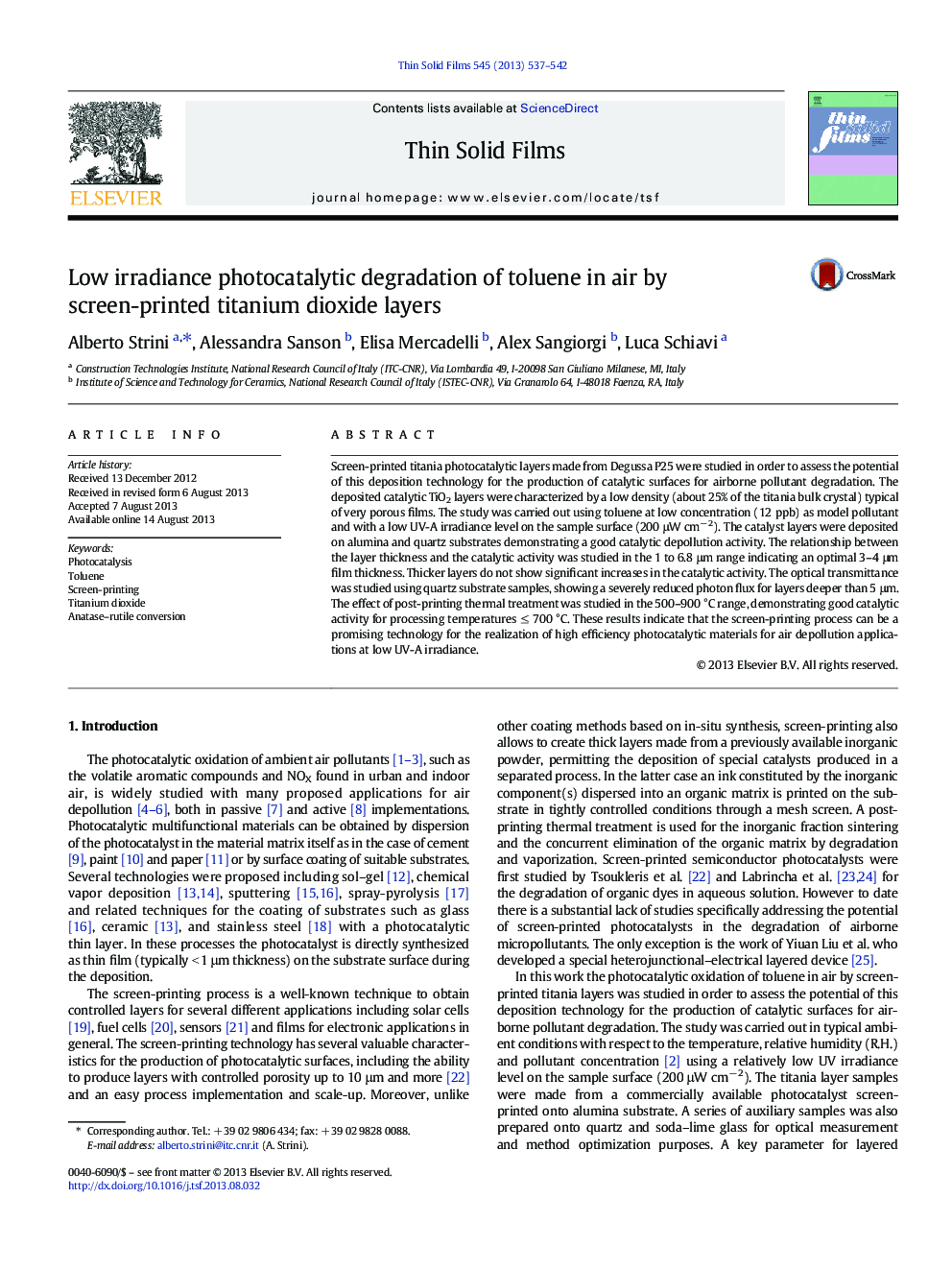| Article ID | Journal | Published Year | Pages | File Type |
|---|---|---|---|---|
| 8036336 | Thin Solid Films | 2013 | 6 Pages |
Abstract
Screen-printed titania photocatalytic layers made from Degussa P25 were studied in order to assess the potential of this deposition technology for the production of catalytic surfaces for airborne pollutant degradation. The deposited catalytic TiO2 layers were characterized by a low density (about 25% of the titania bulk crystal) typical of very porous films. The study was carried out using toluene at low concentration (12 ppb) as model pollutant and with a low UV-A irradiance level on the sample surface (200 μW cmâ 2). The catalyst layers were deposited on alumina and quartz substrates demonstrating a good catalytic depollution activity. The relationship between the layer thickness and the catalytic activity was studied in the 1 to 6.8 μm range indicating an optimal 3-4 μm film thickness. Thicker layers do not show significant increases in the catalytic activity. The optical transmittance was studied using quartz substrate samples, showing a severely reduced photon flux for layers deeper than 5 μm. The effect of post-printing thermal treatment was studied in the 500-900 °C range, demonstrating good catalytic activity for processing temperatures â¤Â 700 °C. These results indicate that the screen-printing process can be a promising technology for the realization of high efficiency photocatalytic materials for air depollution applications at low UV-A irradiance.
Related Topics
Physical Sciences and Engineering
Materials Science
Nanotechnology
Authors
Alberto Strini, Alessandra Sanson, Elisa Mercadelli, Alex Sangiorgi, Luca Schiavi,
